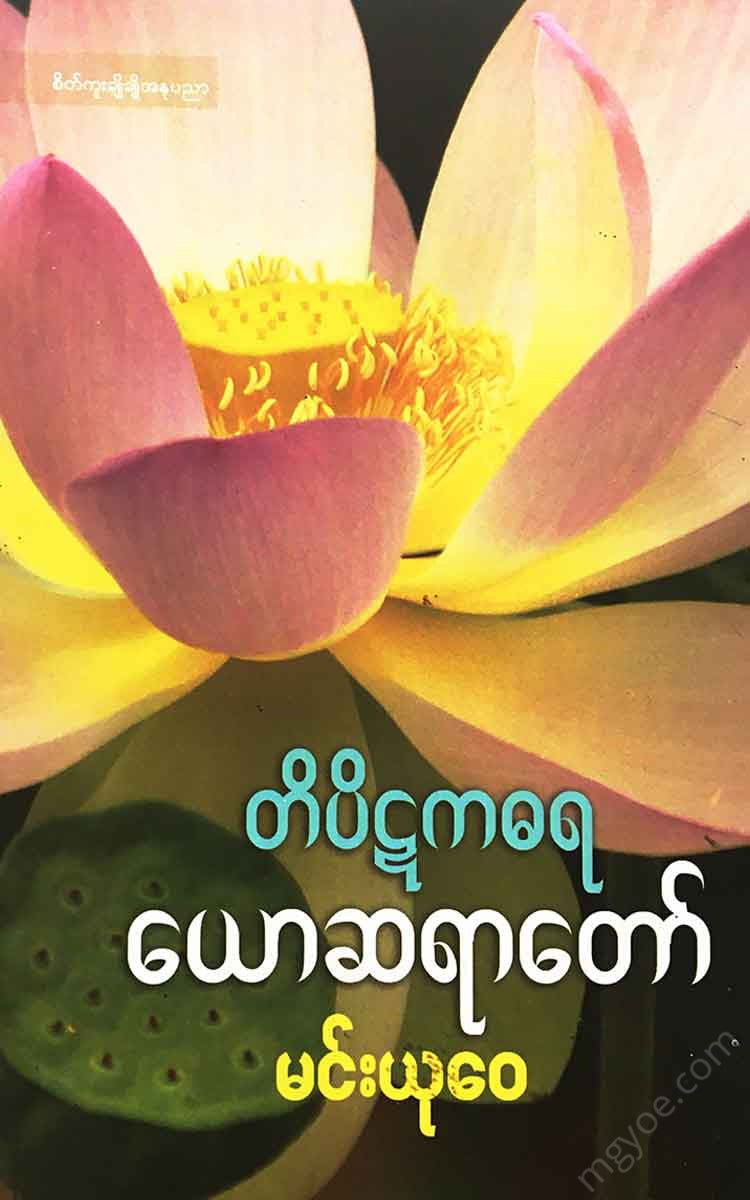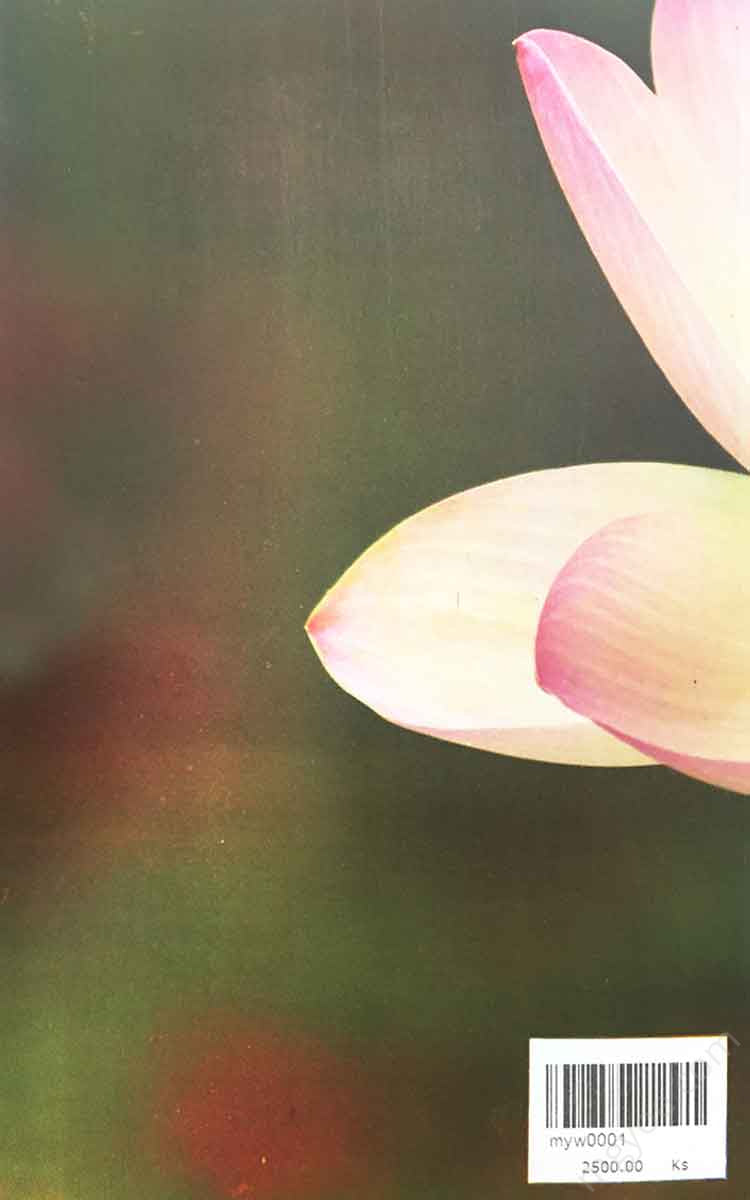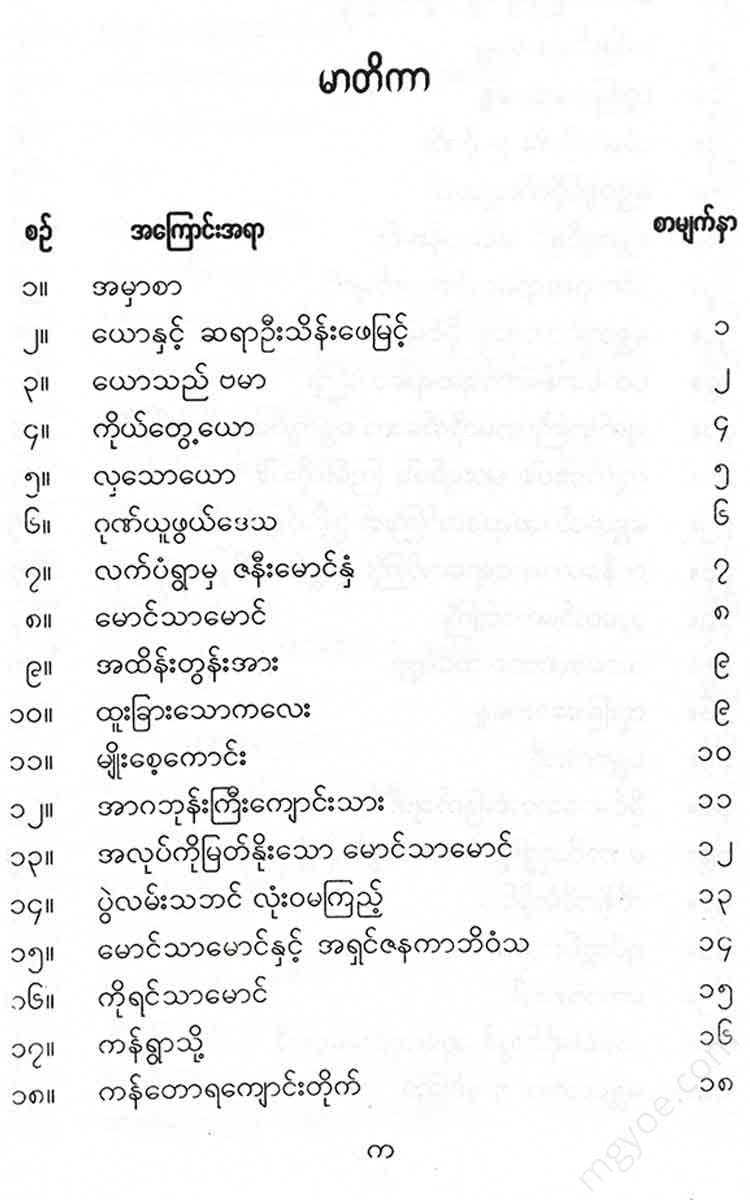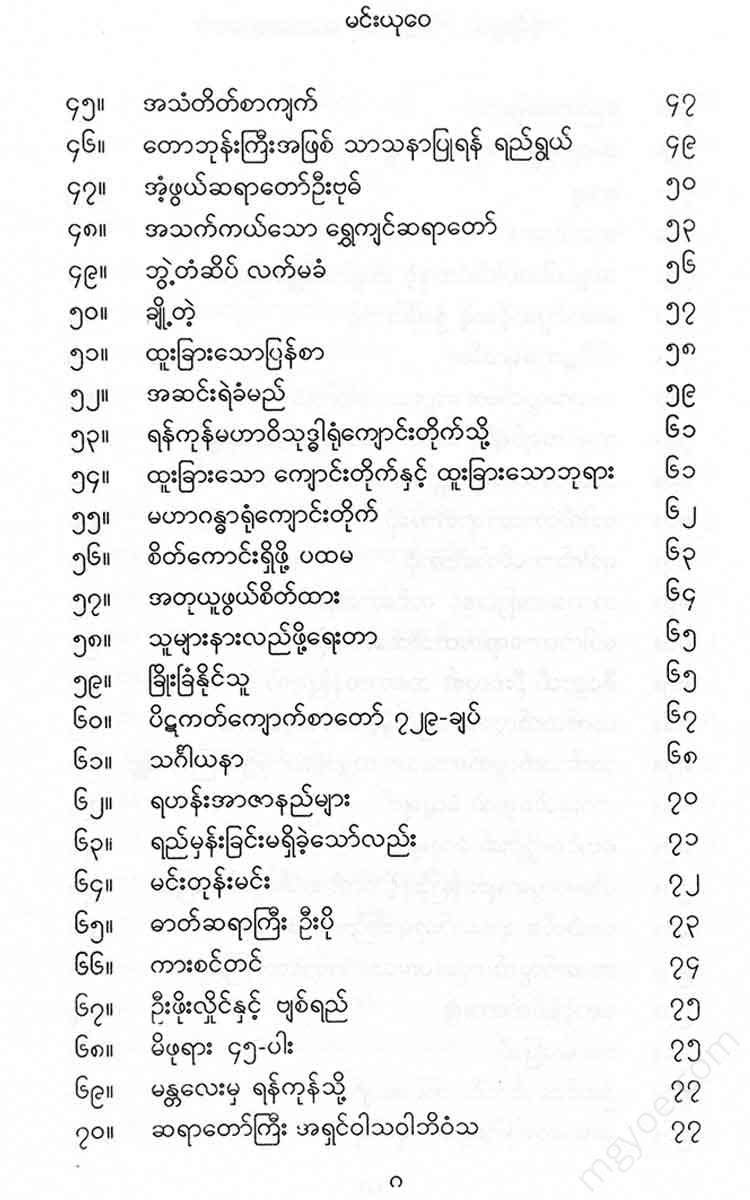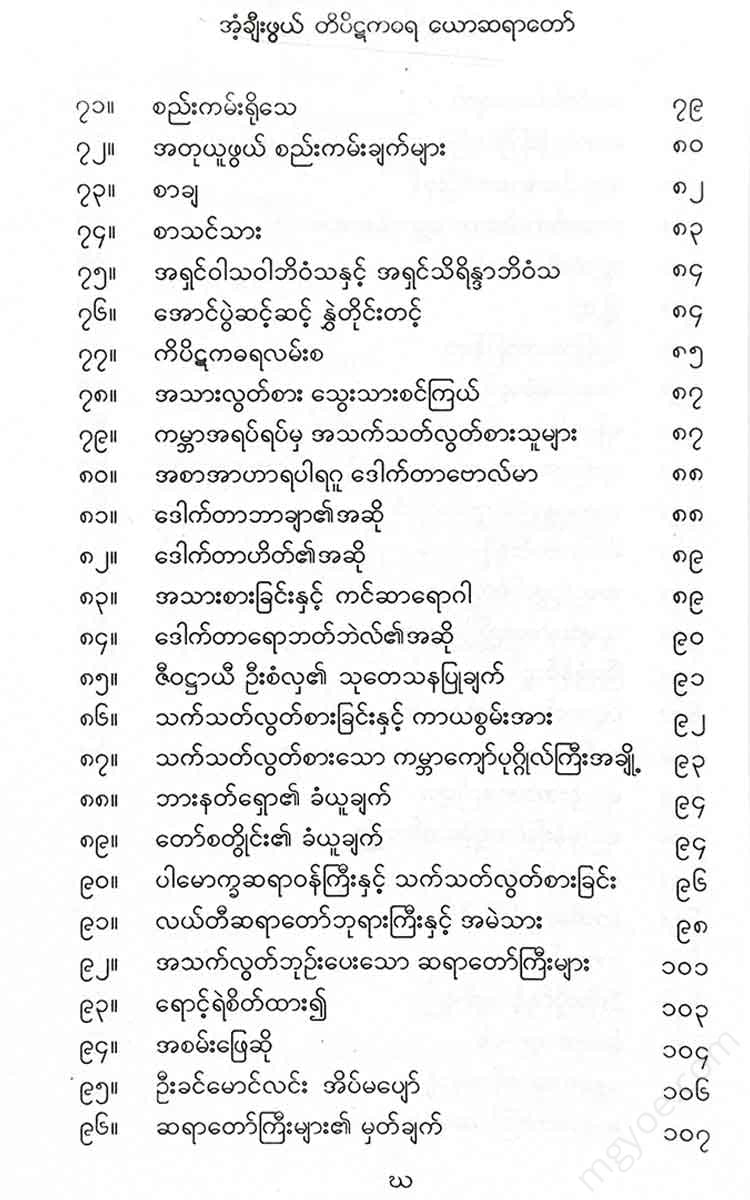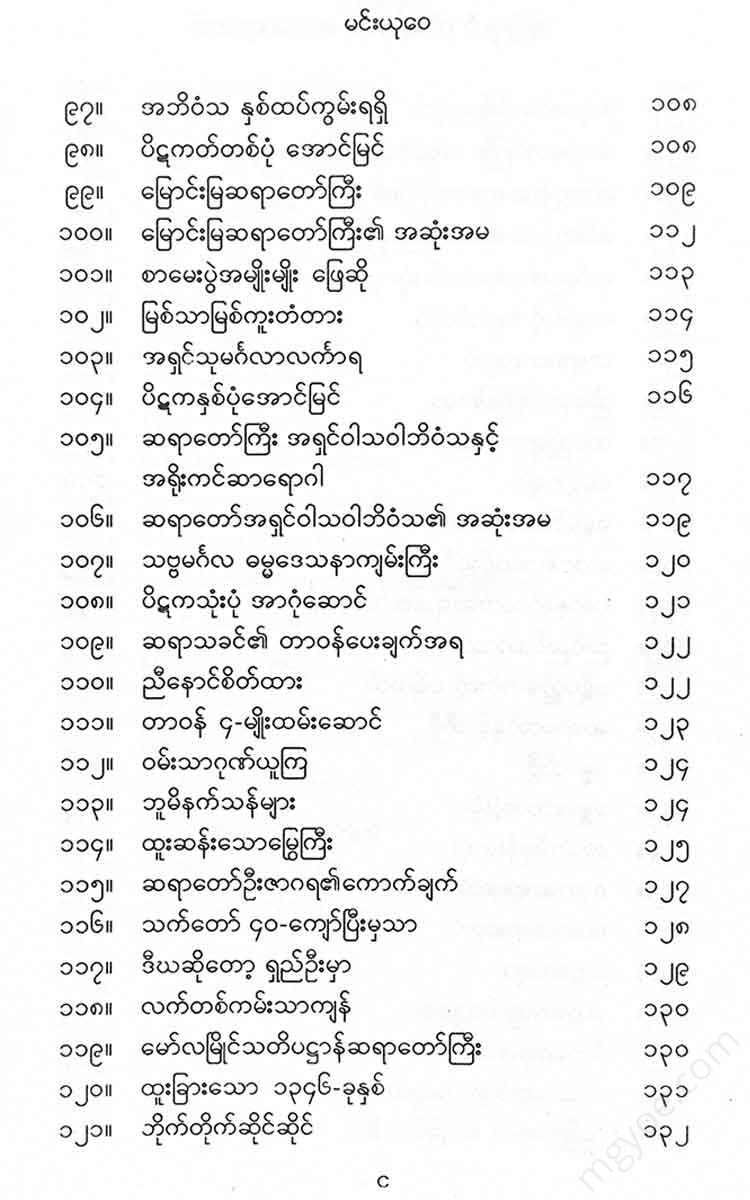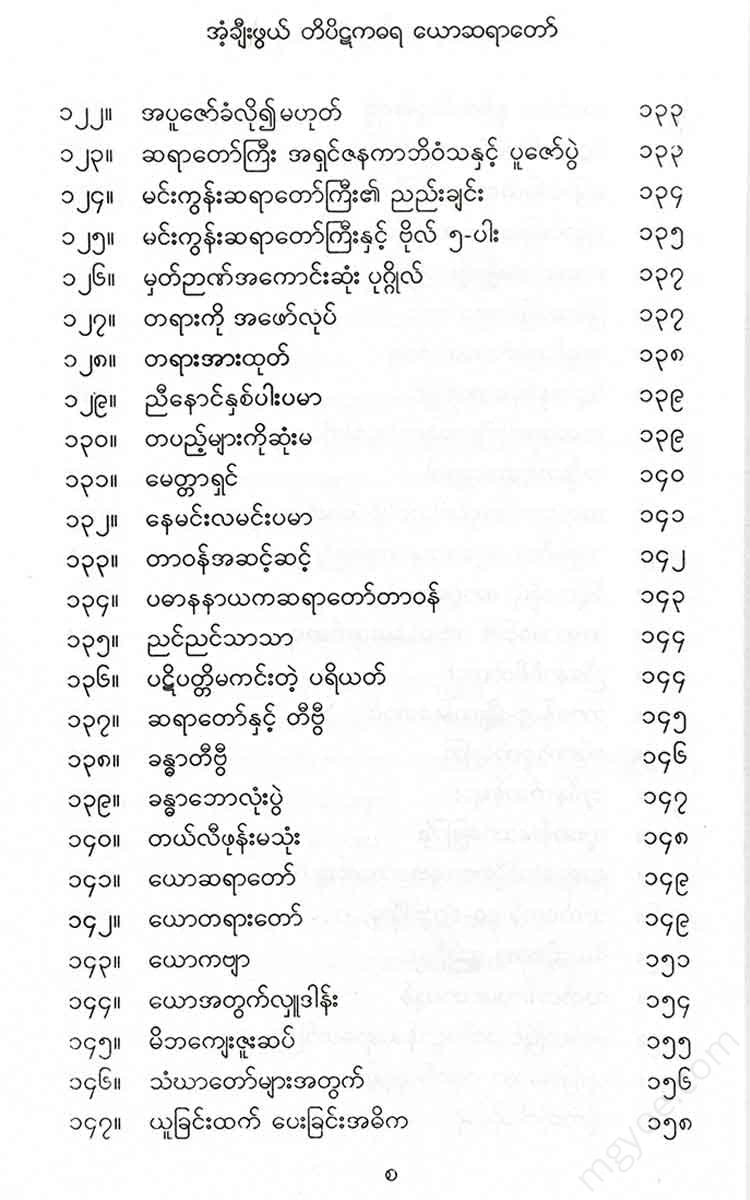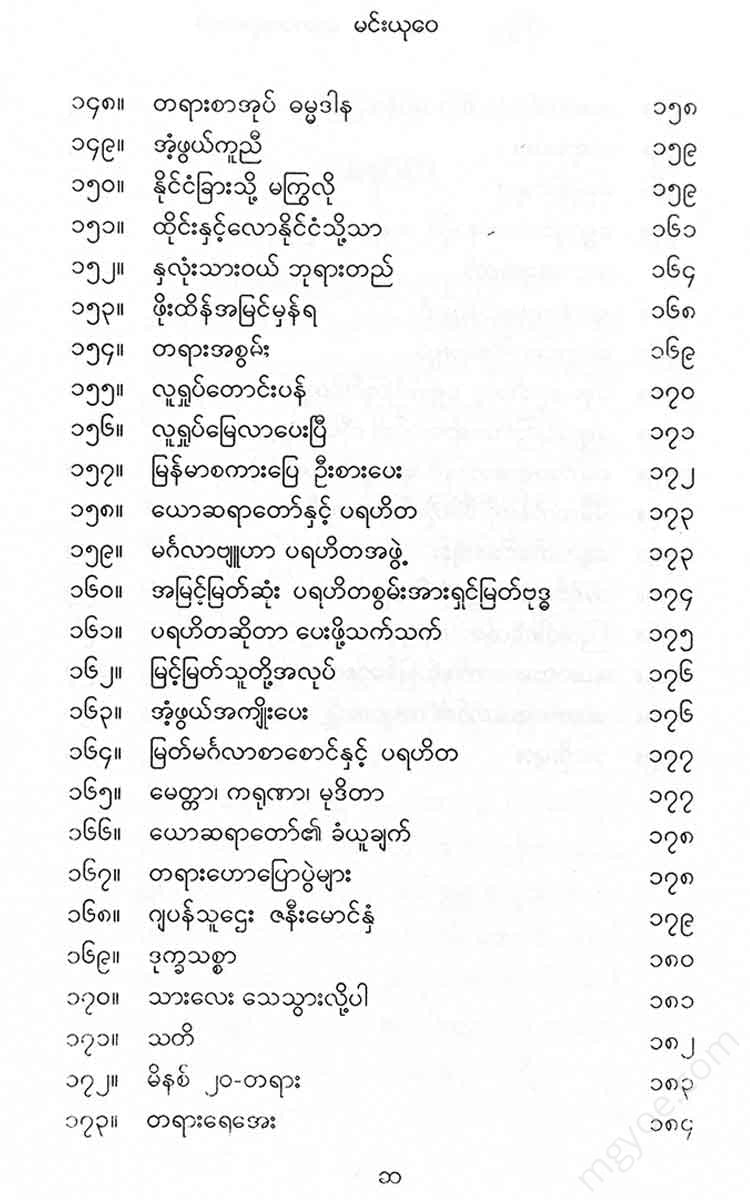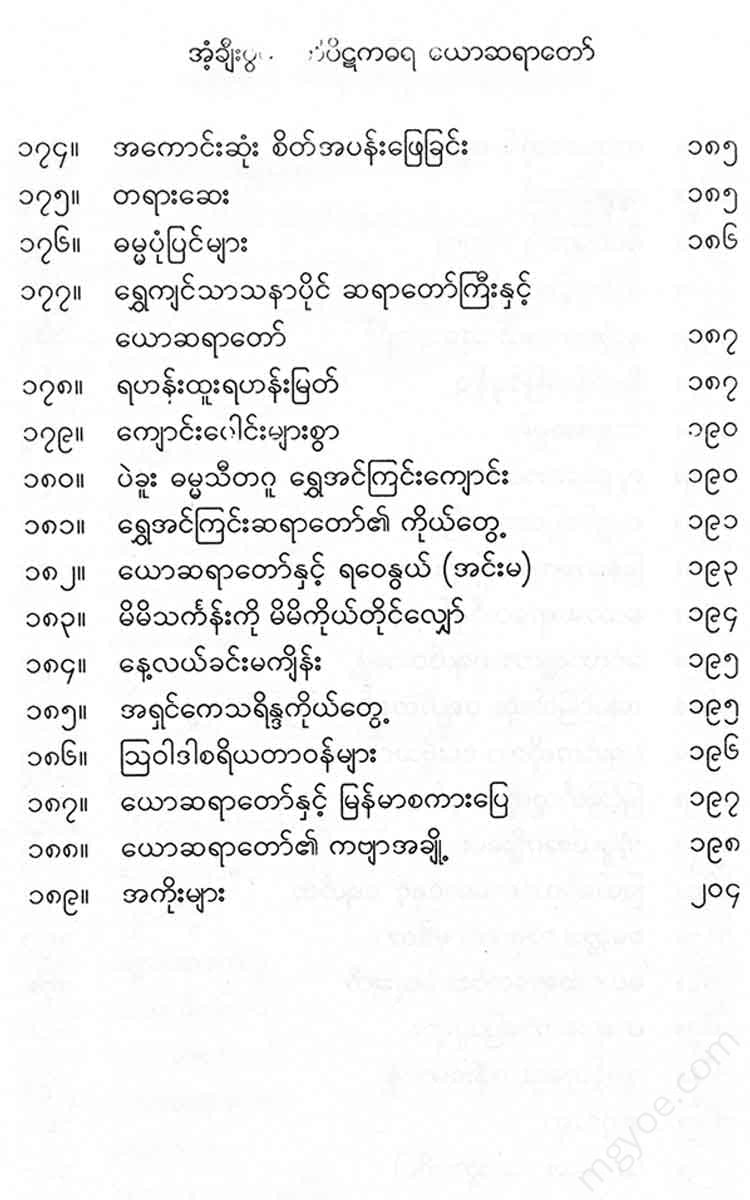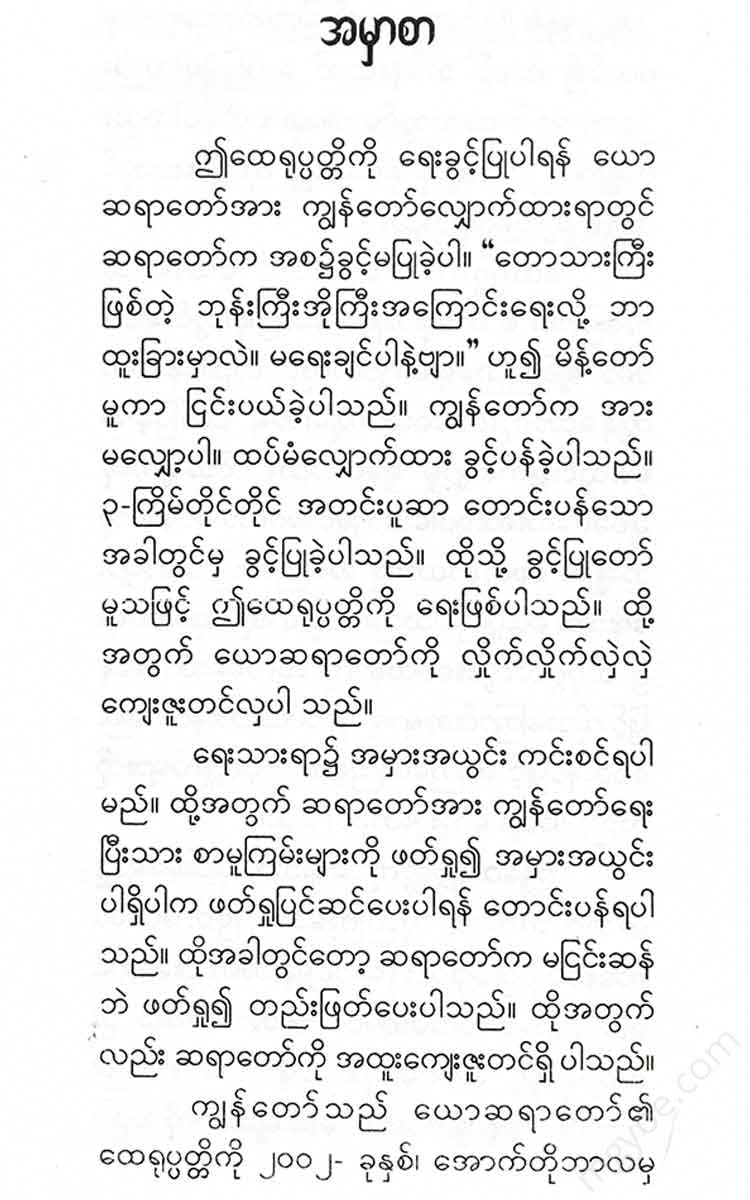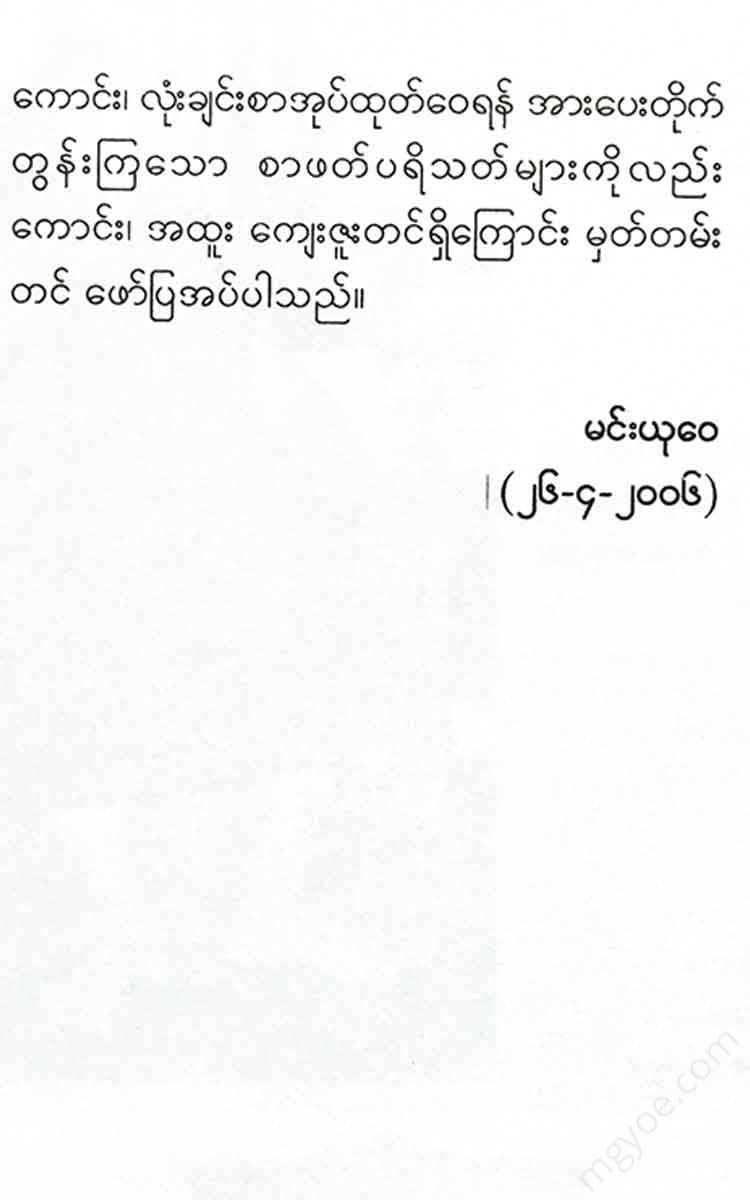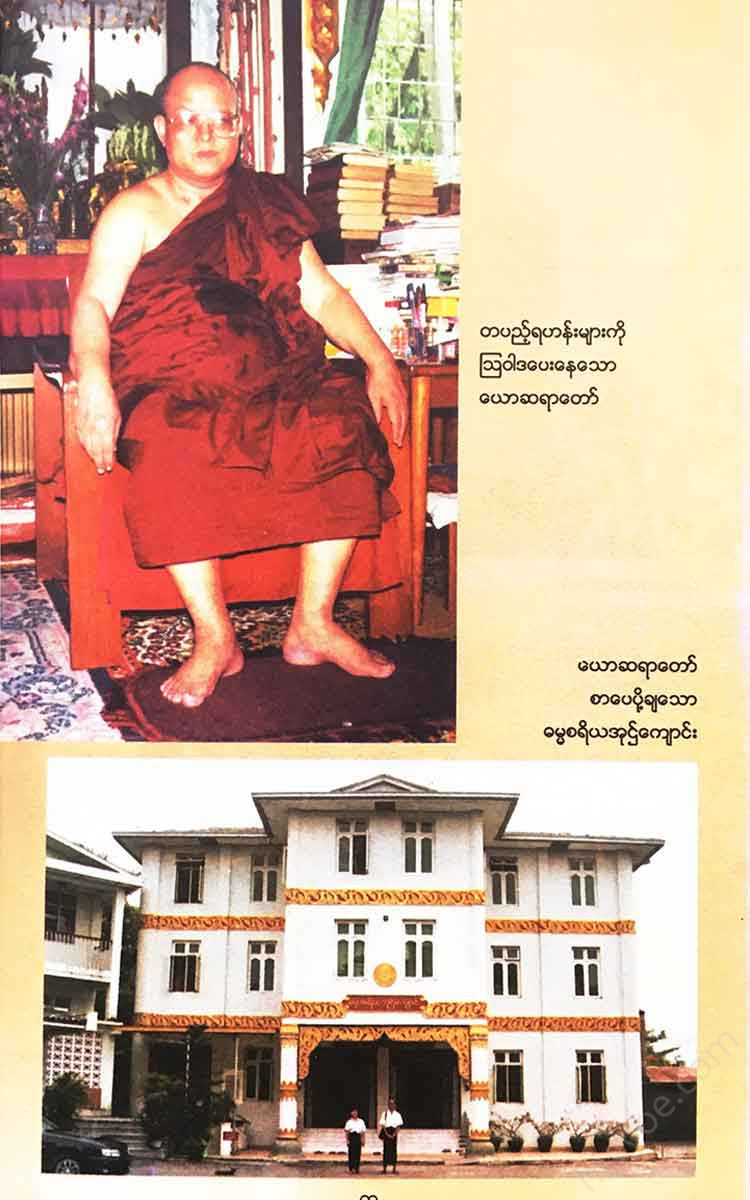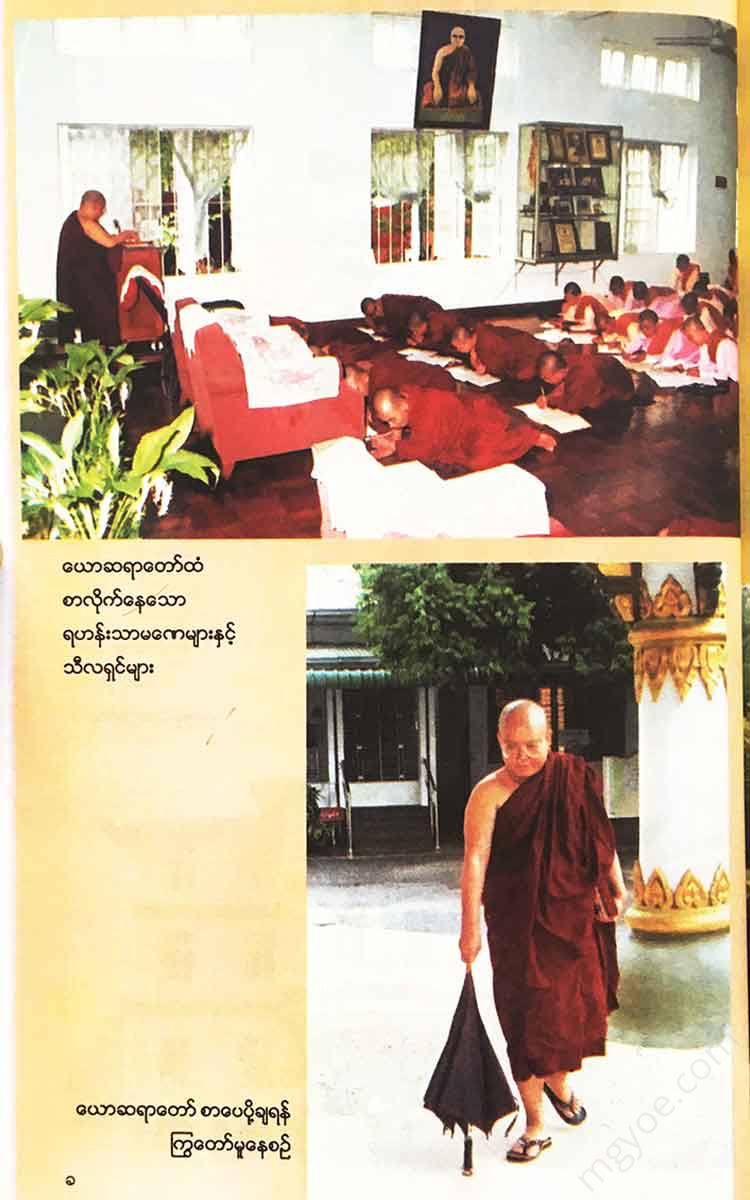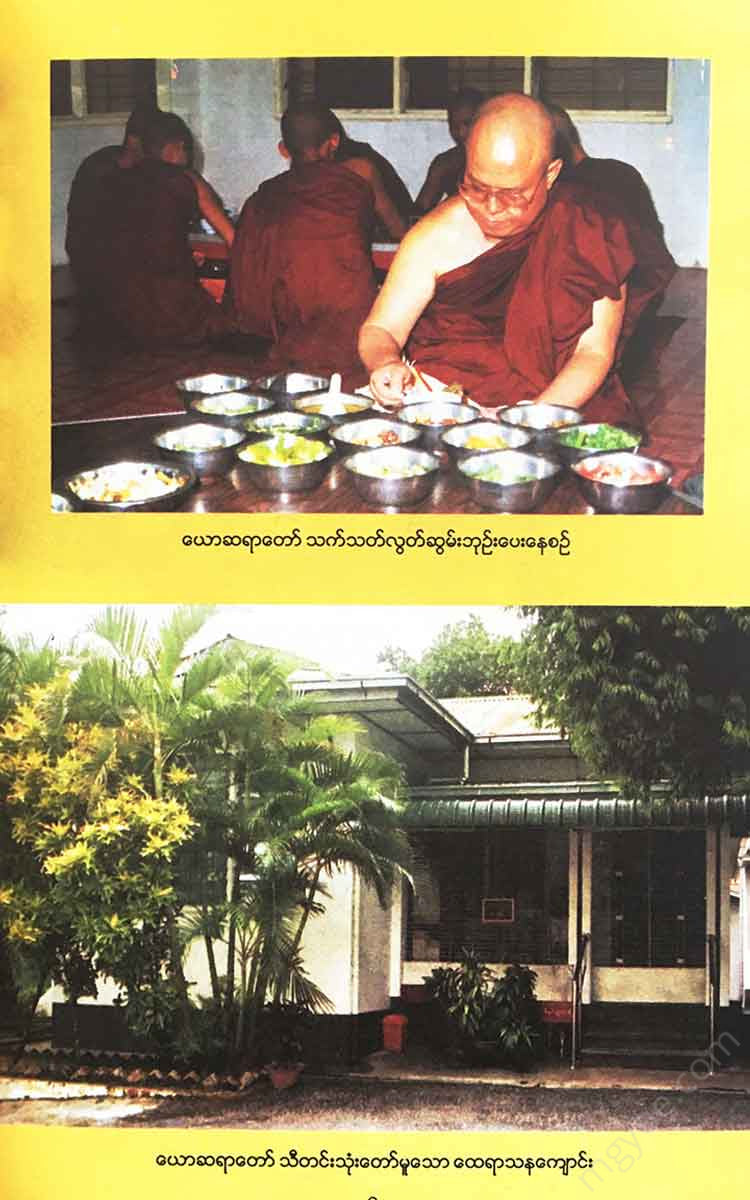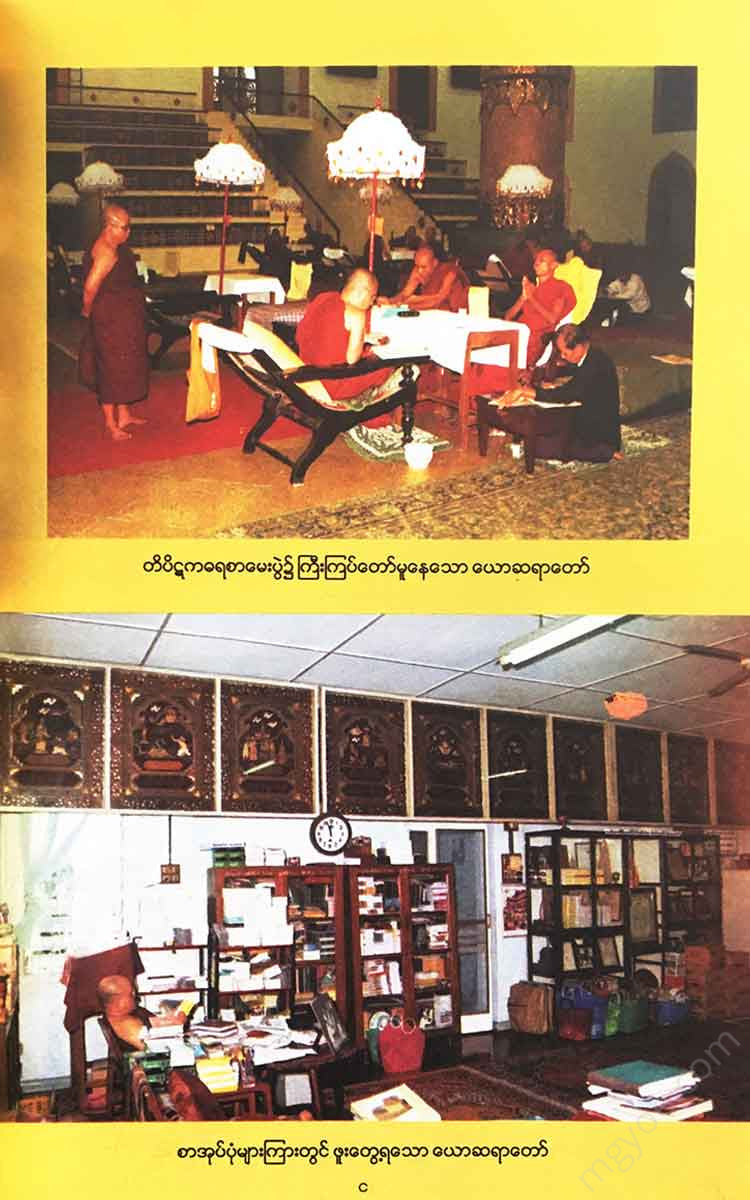စိတ်ကူးချိုချိုစာပေ
Min Yuva - Tipitaka Dharayo Sayadaw
Min Yuva - Tipitaka Dharayo Sayadaw
Couldn't load pickup availability
Yaw and Saya U Thein Pe Myint
"Are the girls Chinma?"
"Where is it supposed to be?"
“So there are many mountain people living around here?”
“No, no. We are Burmese.”
“The girls were talking so softly that I wondered if they were Burmese, so I asked. So you must be from Burma.”
"Yes, oh."
"What's the girl's name?"
"Oh, it's not a city."
"Oh" seems to be the same as "to" in our language.
Yothu was the daughter of a chief from Khin Kyaung village in Ma Saw Township. After a while, the chief himself arrived and invited us to his house for a while. Ma Saw Township and some of the girls were already riding in the jeep we had been riding in and were going to the chief's house. We walked to the chief's house.
The above description is an excerpt from the book “Chin Wisetha Tain Tham So” written by the writer U Thein Pe Myint. The book was published by Sapay Beiman in 1967. Saya U Thein Pe Myint traveled to Chin State in 1966 to write the book. On the way back, Saya U Thein Pe Myint and his companions briefly entered the Yaw region. After reaching Khin Kyaung village on Yaw River and resting for a while, Yaw Thu met Ma Saw and had the following conversation.
Yo is Burmese.
As the Yawma Saw Myo said, the Yaw Tu Yaw people are also Burmans. The Myanmar Encyclopedia states that “the Yaw Tu Yaw people are members of the Burman tribe, and their customs, traditions, and expressions differ according to their region.”
The Yaw Nay is a region along the Myittha River Basin between the Western Yoma Mountains and the Pon Taung Pon Nya. Due to its distance from Yangon and Mandalay, its location on the west bank of the Ayeyarwaddy River and its inland location, and the difficulty of transportation in the past, the language and customs are slightly different. The Yaw Thu and Yaw Thar call the urban areas of Monywa, Pakokku, Magway, Mandalay, Yangon, Pathein, and Mawlamyine as Aok Pyi Aok Ywa. The people living in those areas are also called Aok Thar Aok Thu.
The Yothi and Yothi people are very civilized people. They are very respectful of the Three Jewels. However, in the past, due to some people who lied, some writers of fantasy, sorcery, and ghost stories, and some magicians, some people misunderstood and misrepresented the Yothi and Yothi people. They mistakenly thought that they were people who practiced sorcery, sorcery, and magic.
However, everyone who has visited Yaunal has had their misconceptions and wrong views dispelled. They have experienced the three precious jewels of the Buddha, the Dhamma, and the Sangha of the people of Yaunal, and they have come to love and respect them deeply. They have come to respect them deeply. Saya U Thein Pe Myint, Doctor Tin Shwe, and others have also written and presented the true and wonderful life of the people of Yaunal and Yaunal.
Personally, I see.
In December 1982, I went to the Yaw Neal with cartoonist U Pe Thein, Sayar Htay Maung, Sayar Kyaik Lat Moe Myint, Sayar Nuam Ja Thaing, and Sayar Myat Swe to give a literary lecture. I visited Kyauk Thu, Saw, Laung Shay, Yaw, and Thein Kyin in the Yaw Neal. I was amazed to see how pure-hearted and generous the people of Yaw Neal were.
When we had dinner in Soi, the young men would come and serve us food cooked in their homes. They would come in procession, dressed in fine clothes, some carrying bowls of rice and others carrying trays of dishes. They would welcome us with great devotion and devotion.
On the third day, our group went to Thein Kyin village and visited the Shwe Kan Tha Pagoda. The villagers of Thein Kyin immediately heard that we had guests. Soon, the young men brought food and tea to the pagoda on their trays. They treated us very politely with their beautiful, smiling faces.
"Eat, eat, eat"
They serve tea with green tea, fried elk meat, bamboo shoots, ripe papaya, etc. Each house brings as much as they can and prepares it together. This is a good tradition and custom that is rarely encountered in many parts of Myanmar, let alone in foreign countries.
A local friend from Yaw said, “Once, a troupe from Aok Pyay Aok village came to perform at a pagoda festival. For some reason, the troupe did not make a profit and ended up losing money. They were stranded in Thein Kyin village, unable to return. The villagers of Thein Kyin took pity on them and fed the troupe in turn. It took several days. Finally, the villagers collected money to pay for their expenses. Only then were they able to return. They were very grateful.”
I personally experienced the great generosity and devotion of the Yothu Yothi people. Their noble hearts touched my heart. Therefore, I composed the following poem in that very place.
Beautiful boy
John's Village Beauty
The blue and brown mountains are beautiful.
The river is full of silver and blood.
The scenery is clear and cool.
Agriculture is the land and the fields.
They also weave the loom.
Strong and energetic
Upright and loyal, John.
Greet guests.
I want to feed you, I want to be more generous.
Individual rice packets are delivered in a paper bag.
Young and white, young and old.
A proud region
This beautiful area and the spirit of the local people make Yaunal a proud place. Yaunal is a region that has become more prominent in Myanmar history than Bagan. Some villages in Yaunal are mentioned in the Bagan period stone inscriptions. Some scholars also speculate that Yaunal is the earliest inhabited area in Myanmar history. Evidence of human habitation in the area has been found in the Stone Age.
The present-day Yoan region is part of Magway and Sagaing Regions. The ancient Yoan 4 cities were Saw Myo, Yao Myo, Laung Sya Myo, and Htee Lin Myo. The present-day Yoan 4 cities are Kalay Myo, Gangga Myo, Saw Myo, and Htee Lin Myo.
This 4-city city, Ganggao, is located on the Chin-Burma border. It is 145 miles away from Pakokku.
A couple from Letpan village
14 miles from Gangtok is a small village called Letpan. More than 60 years ago, Letpan had only about 80 houses and a population of just over 400.
In that village, U Ye Naing and Daw Tok Khaing, a married couple, live. U Ye Naing is a farmer. He grows rice, beans, corn, sesame, and cotton. He is a hard worker. He never stops working. His wife, Daw Tok Khaing, is also a good match for her husband. She not only cooks and does household chores, but also weaves. She also spins bamboo.
If you are a true Yothu, there is hardly anyone who does not know how to weave. The Yothu region is a region where the Yothu long weaving industry, called Pini Chaw and Yothbi, has been practiced for many years. Pini Chaw and Yothbi were at the forefront of the anti-colonial movement.
